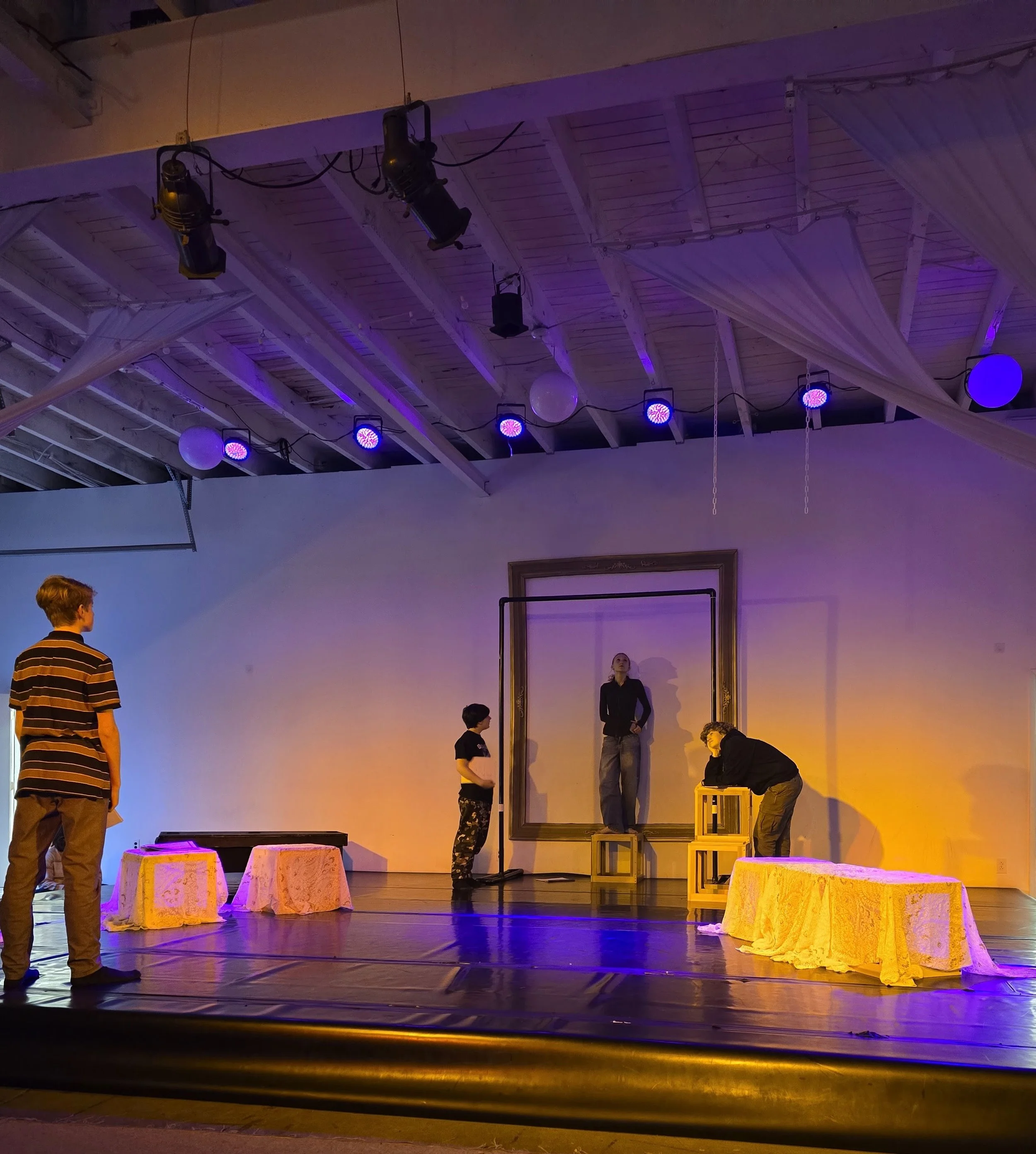Concept Theatre for education
Teen students at Philly PACK rehearse for Oscar Wilde’s The Picture of Dorian Gray.
Concept Theatre for Education: drawing connections to real life
Something interesting happened last night while I was in rehearsal with a group of twenty teen theatre students. It reminded me of the importance of context, concepts, and drawing parallels between the work and the world. In professional theatre-making, we call this study dramaturgy, and in the classroom, this is an opportunity for students to connect the dots between the historical work and the present-day politics, sociology, or movements. When the connection is made, and the light-bulb goes off for the students, it’s an educator’s reward.
My teens are currently in rehearsals for an adaptation I wrote of Oscar Wilde’s The Picture of Dorian Gray. Last night, we were blocking a scene when Basil (the painter) visits Dorian (the muse) to ask if he can borrow back the painting and exhibit it in Paris. Dorian panics because he does not want Basil to see how hideous and monstrous the painting has become, but Basil thinks Dorian does not want the painting exhibited because it will reveal how the painter is in love with his subject.
Basil (to Dorian)
And then, one day, the painting was complete. I stood back to view it, and I was struck with horror at the realization that…it gave me away. Everything I felt for you is there in the painting. For all to see. I knew I could never exhibit it because then the whole world would know, Dorian, that I…am…in love—
Dorian
Don’t say it, Basil.
Basil
But you must’ve seen it. In the painting. You must know that if anyone else views it, they will guess my secret.
After blocking the scene and running it a couple times, I asked the group what Basil means when he says “I was struck with horror at the realization that it gave me away”? Several hands went up. I called on a student who replied, “Because you couldn’t be gay in the 1890s. It was basically a death sentence.”
Bingo.
This led us into a discussion about the consequences of homosexuality, or even alleged homosexuality, during the time Oscar Wilde wrote The Picture of Dorian Gray. I mentioned the author himself was jailed for homosexuality allegations; Wilde was found guilty and served two years in prison. Some students were already aware of Oscar Wilde’s sentence, but many students were not. Our discussion shed light on the context of the play in 1890, but it also drew a parallel as to why the story is important today.
The Picture of Dorian Gray is relevant today for so many reasons, and that’s why it’s considered a classic. In the classroom, we’ve discussed themes of ownership, fan culture, and vanity. We’ve also discussed the dangers of wanting to look young forever. But the discussion last night about Oscar Wilde’s jail sentence for being gay hit hard.
We drew a connection: it is no secret that LBGTQIA+ people are under attack today.
Teens are online, reading the news and watching videos about anti-LBGTQIA+ agendas and policies coming down the pipe-line from the current administration. The rhetoric is affecting today’s young people, and educational opportunities to respond feel important to them. Teens need to be trusted to make art about politics.
Our dramaturgical discussion of the history of Oscar Wilde empowered my students in a new way: their mission became even more clear, and the responsibility to care for the work became an act of resistance.
There’s no reason to shy away from hard truths right now, and there is no point in sheltering teens—they already see and hear everything that’s happening in America and the world. I consider it my responsibility as an educator to provide them with opportunities to express their own feelings of frustration toward injustices they see online and in the real world.
Is online the real world? What’s real? The theatre classroom certainly feels like we’re engaging in something real. I’m thankful for rehearsals. As a teacher, my purpose has never felt more clear than right now.
